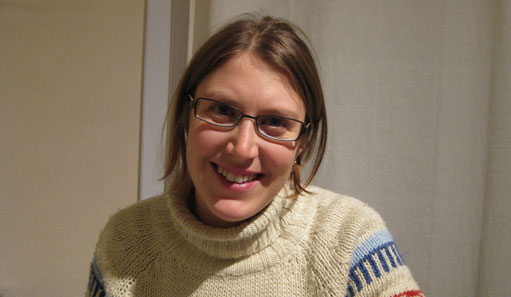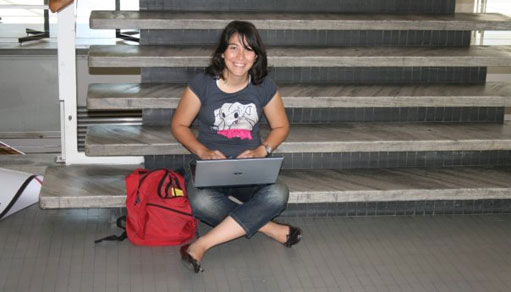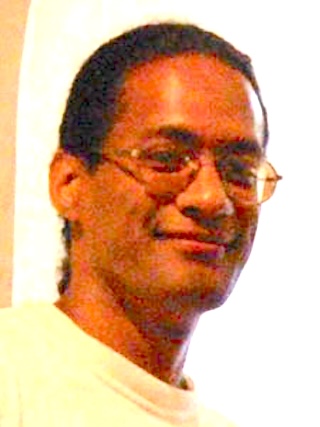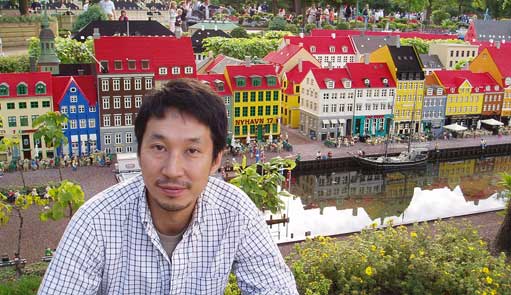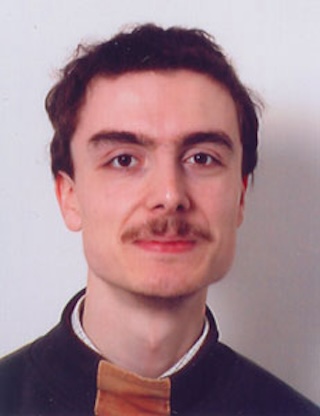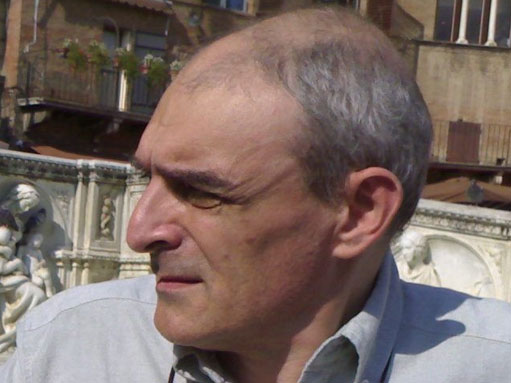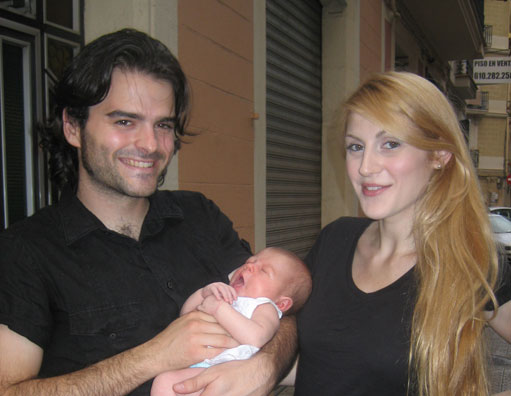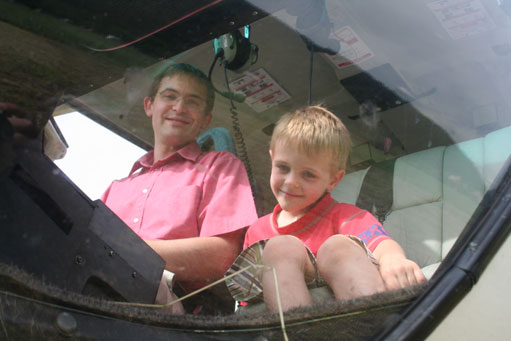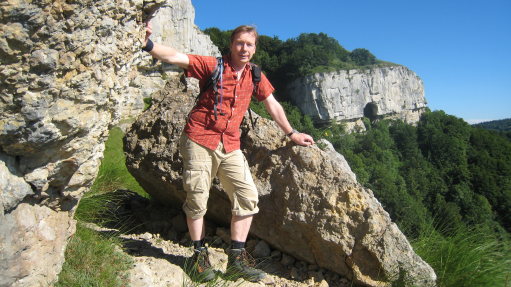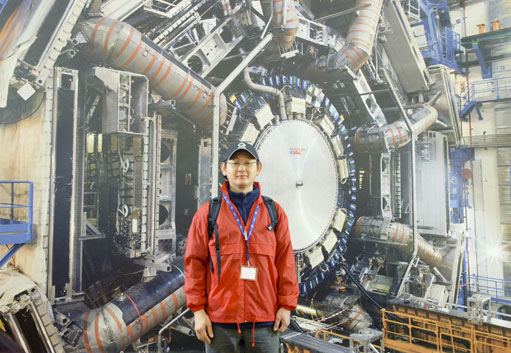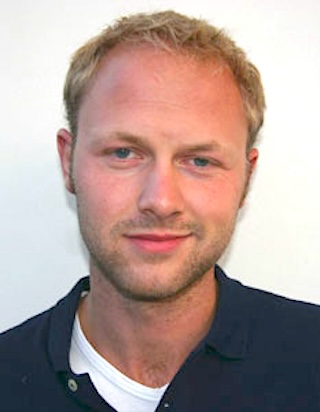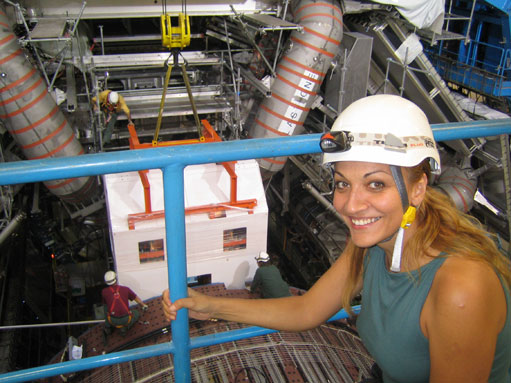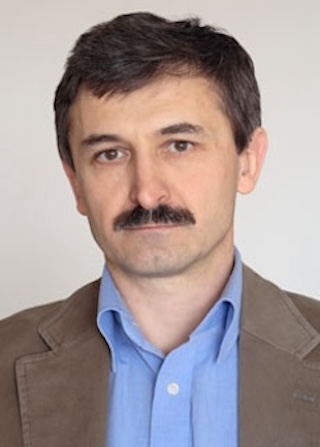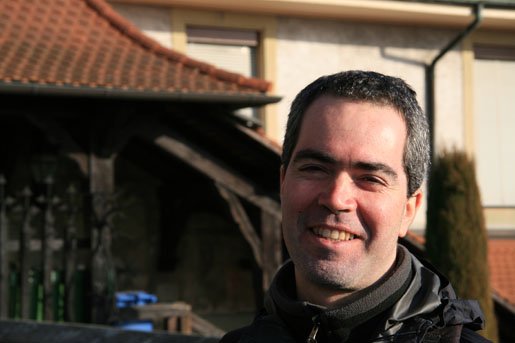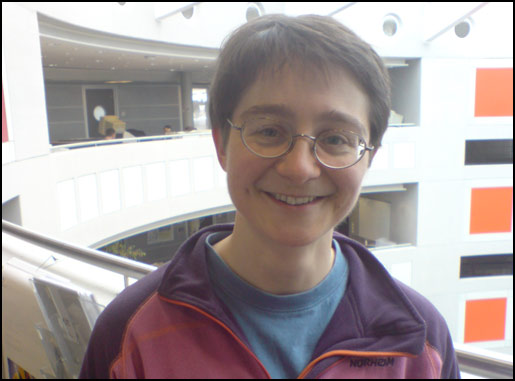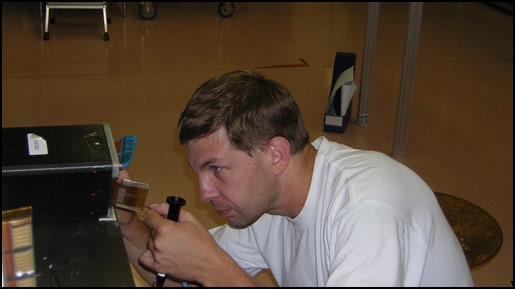Profiles
Zuzana Zajacova
Zuzana Zajacova found her way to ATLAS through a slightly unusual route. Rather than being a particle physicist or engineer, she comes from a background of biomedical physics.
Profile |
Seda Persembe
Last summer, Seda Persembe joined the CERN Summer Students after receiving the Engin Arik fellowship, which was set up last December in memory of Turkish professor Engin Arik. After this unique experience, this fresh Physics graduate from Ankara University is now back at CERN as a research student working with Metin Arik, Engin’s husband.
Profile |
Andi Salzburger
When ATLAS physicist Andi Salzburger finished his PhD in May 2008, he thought of doing something really special to celebrate such a milestone in his life. He ended up walking 430Km, traveling the whole length of Iceland from North to South on foot.
Profile |
Steve Lloyd
Talking to Steve Lloyd, you can’t help but get the sense that the influence of this softly spoken, polite Brit is woven into the very fabric of CERN. As the author of the improved ATLAS Computing Workbook, he has certainly touched the working lives of all new members of ATLAS since 2005, but his reach extends further than that.
Profile |
Alex Harvey
Alex Harvey’s path to particle physics is rather uncommon. He is now a PhD student at Hampton University working in the ATLAS Transition Radiation Tracker (TRT) group. But when Alex was only twenty years old, he had to put on hold getting a physics degree to make a living and that happened to be working in a casino. It was only after seventeen years of a successful career in several gambling houses that Alex went back to his true vocation.
Profile |
Soshi Tsuno
Soshi Tsuno didn’t know much about particle physics until he met professor Hiroshi Takeda in his fourth year at Kobe University in 1996. At the time, ATLAS collaborators there were already developing the thin gap muon chambers (TGCs) that reside in both the large and small wheels, and Soshi joined this work.
Profile |
Anthony Morley
Walk through Restaurant 1 at about 1 p.m. on a weekday, and you can’t fail to notice the plethora of languages being spoken. Not only that, the diversity of accents twisting themselves around English or French conversations reveals just how many nationalities are represented at CERN. Nevertheless, listening to Anthony Morley mid-flow is still a bit of a novelty, given that he’s one of only a handful of Australians working on-site on ATLAS.
Profile |
Thijs Cornelissen
Thijs Cornelissen is a Dutch physicist in the ATLAS Data Processing (ADP) group, working on track reconstruction. In these busy days closer to the switch on of the detector, Thijs is writing code to make ready the ATLAS track software, but he also manages to find time to follow his other passion: flying.
Profile |
Vato Kartvelishvili
Vato Kartvelishvili credits his presence at CERN to a man he never met. George Chikovani, the first Georgian to come to CERN, despite the Iron Curtain in the early 1960s, is an inspiration to him. “He started it all, certainly from Georgian side,” says Vato. Inventor of the streamer chamber, his legacy lives on in ATLAS itself as many subdetectors are advanced models based on his design.
Profile |
Raul Murillo
Good luck has winked at Raul Murillo all his life, and he has seized his opportunities. The story of this Catalan engineer working on the ATLAS TDAQ group is full of remarkable coincidences.
Profile |
Marc Dobson
Marc Dobson plays something of a lynchpin role at ATLAS; he’s one of those utterly essential people whose true value you only discover when things are going wrong and all Hell is breaking loose.
Profile |
Ferdinand Hahn
Ferdinand Hahn may not be strictly ATLAS, but his work on gas systems is vital to all four experiments.
Profile |
Raksapol Thananuwong
Raksapol is both reserved and very friendly – a common Thai characteristic. In September, it will be one year since he left his native Bangkok to join, as a research assistant, the Department of Physics at the University of Geneva. This is where he is doing performance studies of the electron triggers to optimize the physics discovery potential. With his hard work, he is hoping to turn this research into a PhD project in September.
Profile |
Srini Rajagopalan
Forty million beam crossings, each containing about twenty collisions, must be processed and analysed each second with only two hundred of those selected and saved for further analysis. There are no second chances! That is the challenge of the ATLAS trigger system: forefront in the analysis of new discoveries at the LHC. Srini Rajagopalan, a physicist from Brookhaven National Laboratory (BNL) in New York, has taken up this challenge and is one of the scientists responsible for making sure that the trigger selects events that are rich in physics.
Profile |
Troels Petersen
Like many ATLAS collaborators, Troels Petersen’s current project is not his first CERN experience. He came here a decade ago as a summer student on NA48 and NA59, working on kaons and polarised photon beams.
Profile |
Sofia Chouridou
As the 2008 Summer Student Program is just about to start, here is an example of how the Program is successful at bringing talented physics students into the field of particle physics: “The CERN summer school changed my life,” says Sofia Chouridou, a Greek physicist working on the SCT at ATLAS. Since Sofia first came to CERN in 1995 while enrolled in Physics at the University of Thessaloniki, she always wanted to work in the biggest particle physics lab in the world.
Profile |
Sergei Malyukov
“Of course, at the very beginning, I had no idea how complex it would be. I think most people didn't. I thought it might take two or three years, but not almost six,” says Sergei Malyukov of the ATLAS cabling project which will finally reach its completion at the end of June. As Cabling Project Coordinator, Sergei has certainly had his hands full, both metaphorically and physically.
Profile |
Katherine McAlpine
I come from Michigan, the northern US state that looks like a mitten in the middle of the Great Lakes, and graduated from Michigan State University just last May (2007). I knew from the start that I wanted to write science and decided that professional writing and physics would be an excellent combination.
Profile |
Yann Coadou
Yann Coadou may have begun his CERN fellowship just last year, but he is no stranger to the ATLAS project – it is the third time in his short career that he has worked on ATLAS.
Profile |
Katarina Pajchel
Polish-born PhD student Katarina Pajchel moved to Norway when she was very young. She studied physics in Bergen and went on to complete a Master’s degree there too, analysing DELPHI data coming off LEP. Now part of the University of Oslo’s experimental HEP group, she has spent the last three years involved in developing Grid computing for ATLAS.
Profile |
Lucia Masetti and Christian Schmitt
CERN holds a special place in the hearts of Christian Schmitt and Lucia Masetti. Not only are they both working on the ATLAS project, but also the recently wedded couple first met each other on the summer student programme at CERN in 1999.
Profile |
Kirill Egorov
All members of the ATLAS collaboration have been working to a demanding schedule over the last few years as they prepare for the LHC turn-on, but few can claim to have been as busy as Kirill Egorov, affiliated with Indiana University. In the five years since he arrived at ATLAS from the Petersburg Nuclear Physics Institute in Russia, Kirill has worked on the TRT Barrel, cabling, the connection of the TRT end-cap, the gas and cooling system, and the SCT. His next task is helping with the cooling system for the pixel detector.
Profile |
Antonio Cárdenas
When the Venezuelan Antonio Cárdenas discovered the program HELEN –the High Energy Physics Latin American European network – he did not doubt it a second and applied for it. For this physics student from the University of Los Andes in Venezuela, HELEN was a unique chance to come to Europe and get hands on particle physics, a field that he had only read about in books before.
Profile |
Monica Dunford
Anyone working on the ATLAS experiment right now will agree that it is more than a full-time job. But Monica Dunford is not your average woman. On top of working on the Tile Calorimeter, helping to commission the Level-one Trigger, and coordinating Tile Cal’s operation running, she somehow finds the time and energy to row, ski, run marathons, and tell the world about life here at ATLAS.
Profile |

